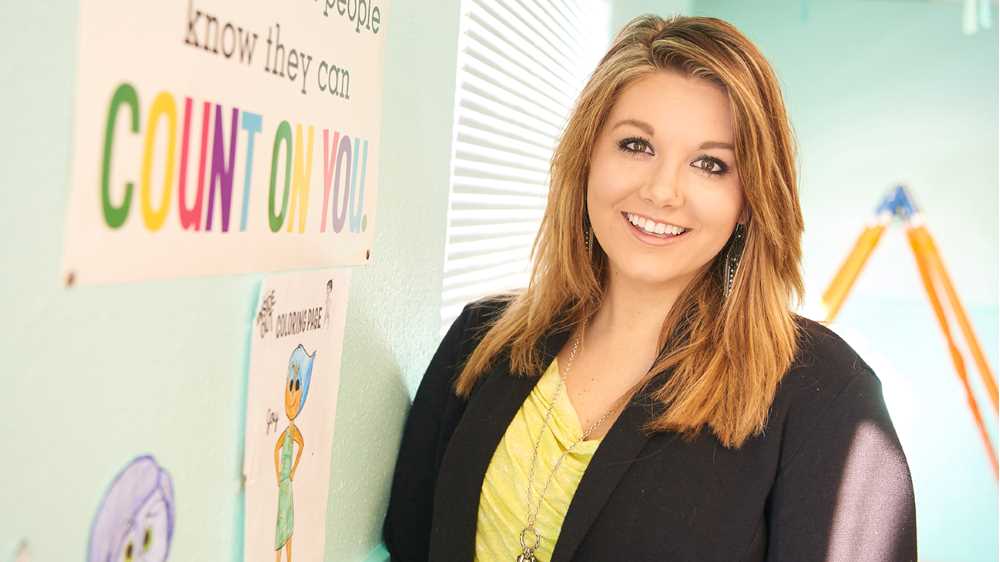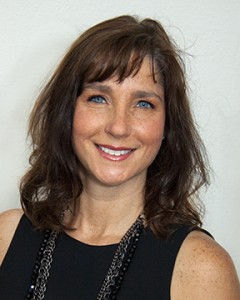Posted 8:42 a.m. Friday, Jan. 15, 2016

A minor in at-risk-child-care is growing among students in any major.
 Lisa Caya, senior lecturer and program coordinator for the at-risk child and youth care minor.[/caption]
It is a great addition to any major because of the large and growing population of children and families that are facing challenges, says Lisa Caya, senior lecturer and program coordinator for the minor. Students with majors ranging from psychology to business to education have added the minor. It became an emphasis and later a minor in 2011. Since then, student interest has climbed. This spring more than 100 students had declared the minor.
“I don’t think a student could leave UWL to work with youth and not be touched by a child that is considered at-risk,” says Caya.
Graduates of the program will have knowledge to be not only better equipped in careers working with children, but also better parents and co-workers. “They are getting a good, well-rounded education for themselves and for whatever career they go into,” says Caya.
VanOss aims to become a school psychologist. Others who graduate with the minor go on to be educators, counselors, social workers, lawyers and more. Nearly 100 percent of graduates of the program who choose to go onto graduate school get into the programs of their choice.
Brittany Leidle, a May 2015 graduate who minored in the program, received a nearly full scholarship to attend law school at the University of St. Thomas where she is now studying child law. Leidle says through the minor she was given “an amazing education” in a variety of topics related to at-risk youth such as: development, risk factors, prevention, foster care, adoption, policies, statistics, and also information about teens, parents and other adults.
Learning through real-world interaction
The minor has a service-learning component where students get involved in hands-on experiences in the community working with at-risk children. Students are required to complete a three-credit internship and participate in a capstone project that encompasses all they have learned throughout the program.
About 50 students in a spring semester senior capstone course launched Project You, which provided resources to high school students and their parents about physical and mental health, self esteem, body image and cyber safety.
“I wanted them to take everything they’ve learned and put it into practice,” notes Caya.
Leidle held internships with the legal department at New Horizons Shelter and Outreach Centers in La Crosse, and also at the public defender’s office.
“The internship requirement in particular not only reinforced my decision to study law and be an advocate for those in need, but also gave me first-hand experience in the court room, with inmates, with victims of abuse, with children of inmates and victims of abuse, in a law office, with legal documents, and more,” says Leidle.
VanOss is learning how to interact with at-risk youth, and advocate for the children through numerous volunteer and work opportunities in La Crosse. Among them: various programs at the YMCA, a youth transition program at Lincoln Middle School and working with children with disabilities at My Innovative Services.
“I am so blessed and thankful to have an amazing professor and adviser (Professor Caya) who has taught me so much about at-risk youth, life and how to use the things I have learned and apply them to the real world,” says VanOss.
Learn more at http://www.uwlax.edu/Psychology/At-risk-Child-and-Youth-minor/
Lisa Caya, senior lecturer and program coordinator for the at-risk child and youth care minor.[/caption]
It is a great addition to any major because of the large and growing population of children and families that are facing challenges, says Lisa Caya, senior lecturer and program coordinator for the minor. Students with majors ranging from psychology to business to education have added the minor. It became an emphasis and later a minor in 2011. Since then, student interest has climbed. This spring more than 100 students had declared the minor.
“I don’t think a student could leave UWL to work with youth and not be touched by a child that is considered at-risk,” says Caya.
Graduates of the program will have knowledge to be not only better equipped in careers working with children, but also better parents and co-workers. “They are getting a good, well-rounded education for themselves and for whatever career they go into,” says Caya.
VanOss aims to become a school psychologist. Others who graduate with the minor go on to be educators, counselors, social workers, lawyers and more. Nearly 100 percent of graduates of the program who choose to go onto graduate school get into the programs of their choice.
Brittany Leidle, a May 2015 graduate who minored in the program, received a nearly full scholarship to attend law school at the University of St. Thomas where she is now studying child law. Leidle says through the minor she was given “an amazing education” in a variety of topics related to at-risk youth such as: development, risk factors, prevention, foster care, adoption, policies, statistics, and also information about teens, parents and other adults.
Learning through real-world interaction
The minor has a service-learning component where students get involved in hands-on experiences in the community working with at-risk children. Students are required to complete a three-credit internship and participate in a capstone project that encompasses all they have learned throughout the program.
About 50 students in a spring semester senior capstone course launched Project You, which provided resources to high school students and their parents about physical and mental health, self esteem, body image and cyber safety.
“I wanted them to take everything they’ve learned and put it into practice,” notes Caya.
Leidle held internships with the legal department at New Horizons Shelter and Outreach Centers in La Crosse, and also at the public defender’s office.
“The internship requirement in particular not only reinforced my decision to study law and be an advocate for those in need, but also gave me first-hand experience in the court room, with inmates, with victims of abuse, with children of inmates and victims of abuse, in a law office, with legal documents, and more,” says Leidle.
VanOss is learning how to interact with at-risk youth, and advocate for the children through numerous volunteer and work opportunities in La Crosse. Among them: various programs at the YMCA, a youth transition program at Lincoln Middle School and working with children with disabilities at My Innovative Services.
“I am so blessed and thankful to have an amazing professor and adviser (Professor Caya) who has taught me so much about at-risk youth, life and how to use the things I have learned and apply them to the real world,” says VanOss.
Learn more at http://www.uwlax.edu/Psychology/At-risk-Child-and-Youth-minor/